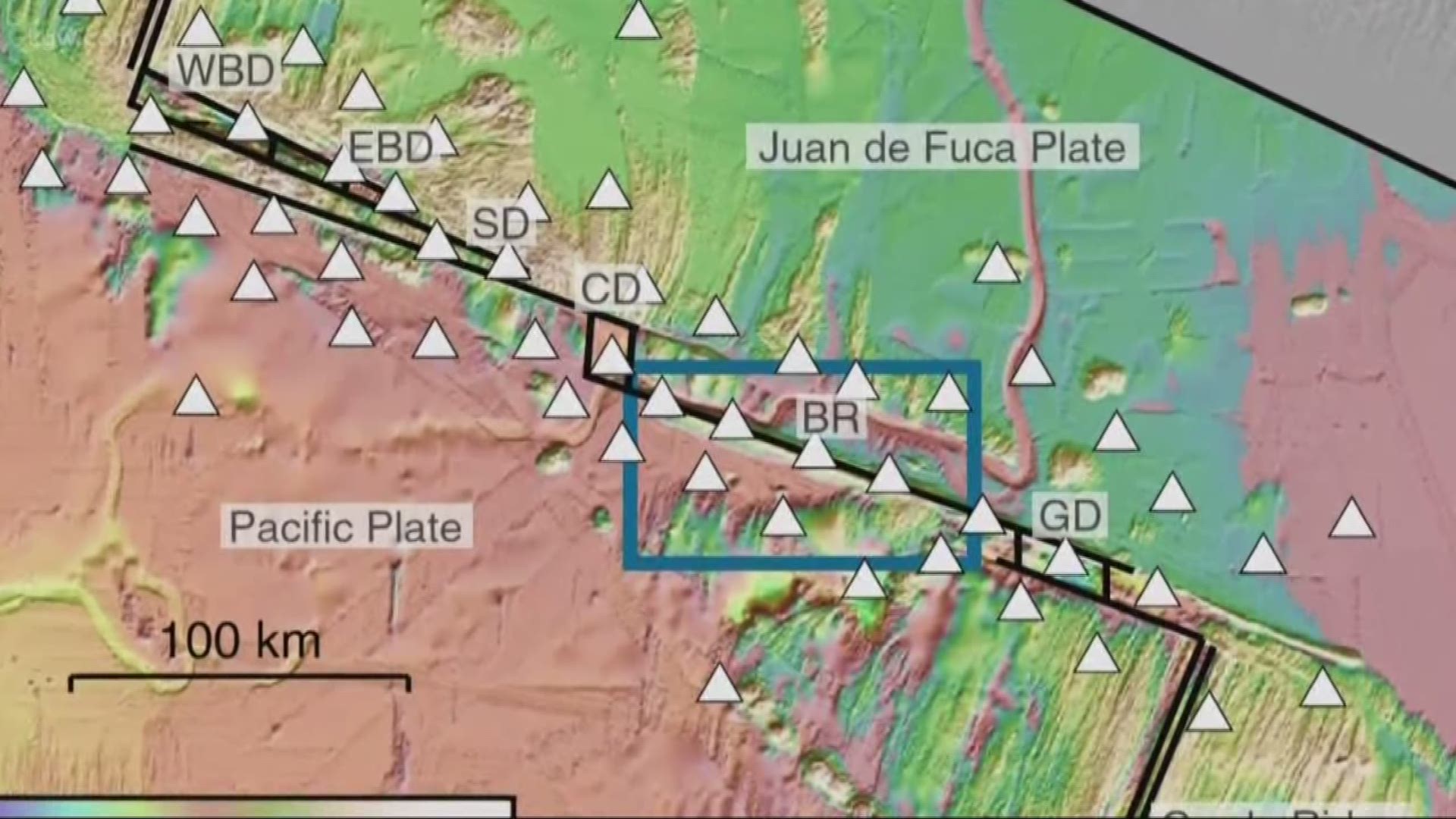CORVALLIS, Ore. — What if we could predict when an earthquake was about to hit? That could save a lot of lives.
Scientists will tell you earthquake prediction won't be happening anytime soon. But researchers at Oregon State University have made an important step in understanding what might set off those big quakes.
Their study began in 2012, about 70 miles off Oregon's coast. The scientists deployed more than 50 seismometers along an underwater fault called the Blanco Transform Fault. The sensors recorded the movement in that fault
The researchers discovered the fault was producing, on average, more than 20 small earthquakes every day. The small earthquakes were caused by very slow movement in the fault.
But that's not all they discovered. The scientists also found that one of those earthquake swarms actually triggered a big earthquake.
It's a finding that could have big implications in the future.
"If it's proven, it can tell us more about how earthquakes are generated and potentially narrow down a window to when large earthquakes can happen. But it's quite a way down the road," said Vacluv Kuna, the lead author of the study.
And here's where it gets even more interesting.
The scientists say similar slow movement is happening in the Cascadia Subduction Zone, and therefore adding stress to it. The Cascadia Subduction Zone is the offshore fault that scientists say could produce a magnitude 9 earthquake in our area.
Much more research and many more experiments need to be done to find out what specific kind of quake swarm will be the one to trigger the "Big One." But this research is a good start.

